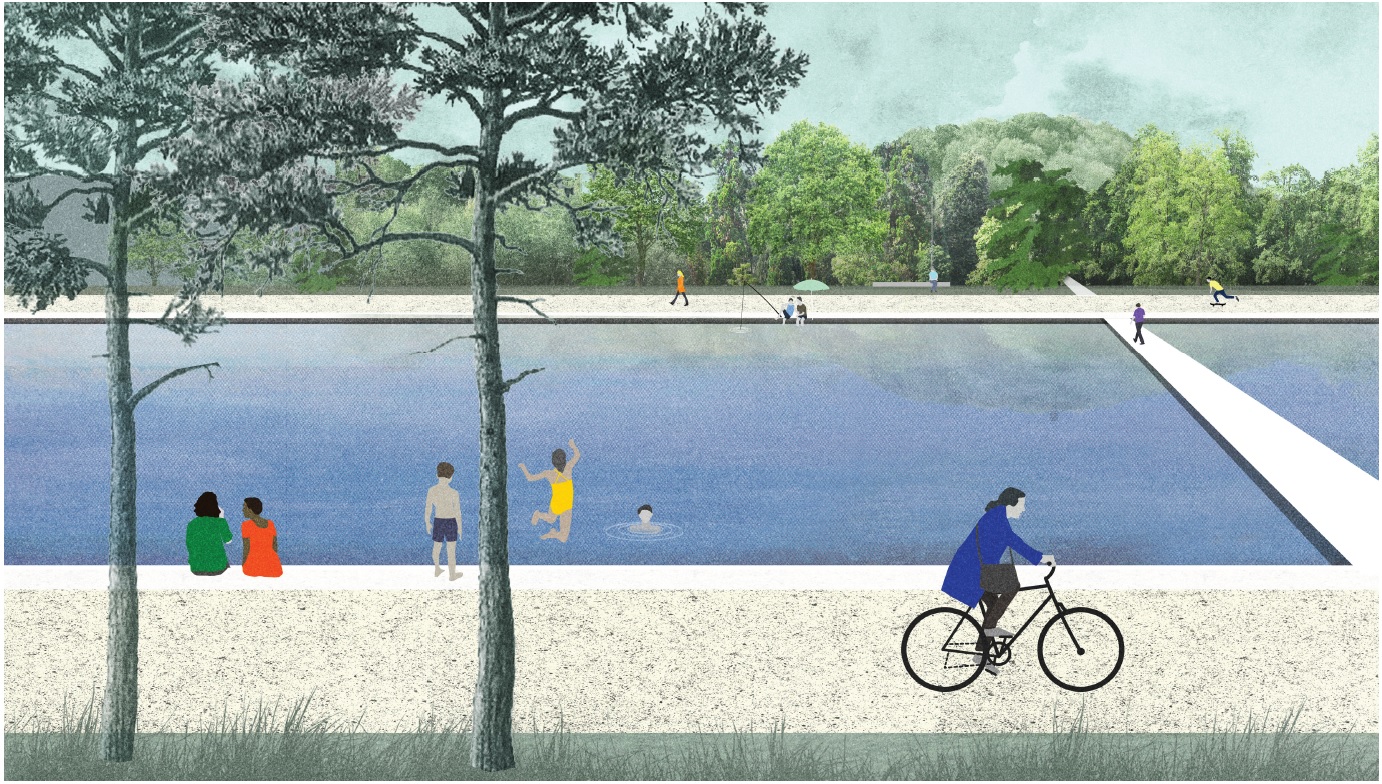
Dutzendteich: difficult heritage as new public park spaces
Graduation project
Amsterdam Academy of Architecture
How to deal with the difficult history of a site? Volkspark Dutzendteich in Nuremberg Germany, is the place where the Nazi party rallies were organized in the 1930s. An event that is still prominently visible at the site with enormous buildings and structures remaining that create lifeless open spaces. Besides this, the park itself is in a poor condition. How could a new approach to this heritage act as a catalyst to developing Dutzendteich into a high quality city park? The proposal is to incorporate the heritage sites by locating them in open spaces in the forest. Instead of reducing the scale of those sites, they would become better defined spaces when placed into something even bigger: the forest. The design focused on the four prominent and problematic heritage sites. The Grosse Strasse (a ‘marching’ road) becomes a waterway at the center of the park. This intervention provides the material for the two other sites: the stone is used to create a sports square at the Zeppelinfeld (a former arena) and the soil to fill the toxic Silbersee (a lake) that becomes a dune, the Silberdüne. The last of the four is the congress hall, whose enclosed courtyard is to become an exotic garden, while the building facade will be opened up. This transformation of the dilapidated Volkspark Dutzendteich gives the park landscape a modified identity and a new practical value, as well as giving the difficult on-site history a meaningful place in the park.
